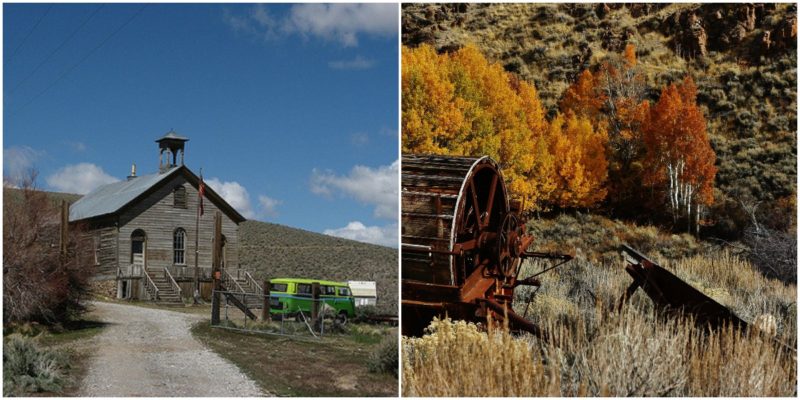Unionville today is a small settlement with less than 20 inhabitants in Pershing County, Nevada, located just south of Route 400 on Unionville Road. There was a time however when this small town was booming with life.
It’s heydays were rocking during the 1870s when the town was quite active in mining and processing silver ore. For a while Samuel Langhorne Clemens, better known by his pen name Mark Twain, tried his luck prospecting in Unionville.

While the big mining boom was taking place in Unionville, between 1863 and 1870, the town became the county seat for Humboldt County, and had a population counting more than 1,600 people. In 1862 the famed author arrived in the town with hopes of striking a silver vein.
He did not seem too impressed with the place, describing Unionville in one of his travel diaries as “Eleven cabins and a liberty pole.” Clemens found some silver but not enough to make him rich and ensure a life of leisure that every writer dreams of, so he left Unionville the next year. The cabin he stayed in is still standing and it’s referred to as Mark Twain’s Cabin to this day.

As the story goes in most mining towns and communities, after the rise comes the fall. The decline in Unionville came in 1870 when it was pretty clear that very little ore was left under the ground.
The completion of the Central Pacific Railroad through Humboldt Valley sped up the decline as it gave an opportunity to Winnemucca to become the new major shipping and trade center, and the new county seat of the Humboldt County.


One of the most prominent of Unionsville’s citizens was Signor Paul Laveaga. Born in Mexico, he migrated to Nevada in 1866 and started working and mining in Unionville. Just two years later he opened a lodging house with a restaurant that was active all the way through until 1884, then he closed the lodging house and left for Winnemucca, as most successful Unionville people did. In the years he was a resident of Unionville he also served as post master, and was elected and served four consecutive terms in the state assembly.

Unionville was a place of controversy and racism towards the Chinese laborers that resided there during the last years of it’s existence. Unionsville’s white inhabitants, supported by the town’s Democratic party newspaper, the Humboldt Register, formed an Anti-Chinese League and expelled the Chinese population using force. The Chinese, outnumbered and outgunned, were taken out of the town in a wagon and dumped twenty five miles away in Mill City.
In the aftermath of this incident, eighteen men were named in court as perpetrators of the crime — however only two of the eighteen were arrested and both of them were released. The Chinese laborers were not persuaded to permanently stay outside of the town limits and returned to the mine several years later.

Today this hamlet is almost abandoned with only one bed and breakfast business, and a few residential houses positioned close together on the gravel road. No other service or building of any social or public interest can be found nearby.
Basically if the folks that still live there need anything, they have to drive for one hour to the nearest town. Unlike other Nevada ghost mine towns, this one has very little to offer. No remains of great buildings or stories about haunted mines. It is not a tourist attraction of any kind, except maybe for Twain aficionados.
